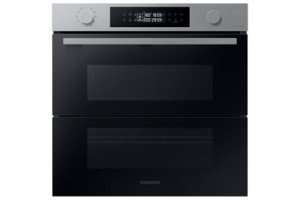Built-In Cookers: What's New? No One Is Talking About
The Rise of Built-In Cookers: A Comprehensive Guide
Over the last few years, built-in cookers have gained significant popularity amongst house owners and cooking enthusiasts alike. These appliances seamlessly incorporate into kitchen designs, offering a blend of performance and visual appeals. As development continues to progress within the kitchen appliance sector, built-in cookers have actually transformed from mere benefits into important tools for modern cooking. This short article delves into numerous elements of built-in cookers, including their types, advantages, setup factors to consider, and maintenance ideas.
What are Built-In Cookers?
Built-in cookers are kitchen appliances intentionally created to be integrated into cabinets or counter tops. Unlike freestanding systems that inhabit standalone space, built-in cookers enhance the kitchen's total design by providing a seamless look. They are typically part of a coordinated set that may include ovens, microwaves, and stovetops.
Kinds Of Built-In Cookers
Built-in cookers come in various forms, each dealing with particular cooking designs and choices. The following table lays out common types of built-in cookers:
Type
Description
Benefits
Built-In Ovens
Wall-mounted or integrated ovens that conserve flooring space.
Conserve space; simple access; aesthetic appeal.
Built-In Cooktops
Stovetop systems set up straight into the countertop.
Versatile style choices; available in gas, electric, or induction.
Microwaves
Built-in microwaves incorporate into cabinets for a structured look.
Conserves countertop space; contemporary design.
Combination Ovens
Ovens that combine standard and microwave cooking features.
Versatility; faster cooking times.
Steam Ovens
Usage steam for cooking, preserving nutrients and tastes.
Healthier cooking; ideal for vegetables and fish.
Benefits of Built-In Cookers
Buying built-in cookers provides numerous benefits that attract both performance and style. Below are a few of the key advantages:
1. Area Efficiency
Built-in cookers maximize available space, making them perfect for smaller sized kitchen areas. They use a structured appearance without compromising cooking abilities.
2. Style Integration
These appliances mix effortlessly into kitchen cabinetry, enhancing the total visual. Homeowners have different design choices, enabling them to produce a cohesive kitchen appearance.
3. Enhanced Accessibility
Built-in ovens positioned at eye level get rid of the requirement to bend down to examine food, making cooking a more available experience for everyone, consisting of those with mobility challenges.
4. Versatile Cooking Options
With various styles and functionalities, built-in cookers enable varied cooking techniques. Home cooks can choose appliances that best suit their cooking choices.
5. Increased Home Value
Stylish built-in cookers can improve the home's general worth, particularly in competitive property markets. Purchasers often choose fully equipped kitchen areas.
Installation Considerations
While built-in cookers use lots of advantages, their installation needs cautious planning. Here are vital factors to consider:
- Space Measurement: Before acquiring any built-in cooker, it's important to measure the desired location precisely. Appliances need to fit perfectly within existing cabinetry, leaving appropriate ventilation space.
- Electrical Power and Gas Supply: For built-in electrical cookers, make sure that adequate electric electrical wiring is readily available. Gas cookers require correct gas line installation.
- Expert Installation: Due to their complexity, built-in cookers often require professional setup. Hiring a professional ensures safety and proper operation.
- Upkeep Access: Consider how the cooker will be accessed for cleaning and upkeep. Accessibility should stay a concern throughout setup.
- Compatibility with Other Appliances: Ensure that new built-in cookers are compatible with existing kitchen appliances for a cohesive design.
Upkeep Tips for Built-In Cookers
Keeping built-in cookers in top condition boosts their performance and longevity. Here are some maintenance ideas:
- Routine Cleaning: Regularly clean the oven and cooktop surfaces to avoid accumulation of grease and grime. Utilize non-abrasive cleaners ideal for the appliance product.
- Examine Connections: Regularly inspect gas lines and electrical connections for security. Instantly resolve any signs of wear or damage.
- Change Filters: Many built-in ovens and microwaves consist of filters that need replacement. Follow the manufacturer's guidelines for changing these elements.
- Calibration: Over time, built-in ovens may require recalibration to ensure accurate temperature level settings. Speak with the user manual for guidelines on how to recalibrate.
- Specialist Service: Schedule expert maintenance checks periodically to guarantee that all parts work efficiently.
Built-in cookers represent a substantial advancement in kitchen design and functionality. Their smooth integration into cabinets not only enhances the visual appeal of a kitchen but also improves effectiveness and use. By understanding the numerous kinds of built-in cookers, their advantages, and considerations for setup and upkeep, house owners can make informed choices that elevate their cooking experience.
Often Asked Questions (FAQs)
1. Are built-in cookers more expensive than freestanding models?
While built-in cookers may have a higher initial cost, they often supply improved setup aesthetic appeals and higher performance, making them a worthwhile financial investment for many homeowners.
2. Can I install a built-in cooker myself?
Though some property owners choose to install built-in cookers themselves, it is frequently recommended to hire a professional due to the complexities included, especially with gas lines and electric wiring.
3. How do I pick the best built-in cooker for my kitchen?
Consider your cooking practices, kitchen style, and area limitations when selecting built-in cookers. It's also necessary to assess the power source and wanted performances.
4. What is the lifespan of a built-in cooker?
With appropriate maintenance, built-in cookers, particularly ovens, can last several years— often ranging from 10 to 20 years, depending on the brand and usage.
5. Are built-in cookers energy-efficient?
Lots of modern-day built-in cookers feature energy-efficient innovations, such as convection cooking and clever functions, which can help in reducing energy usage.
Built-in cookers offer an advanced service to modern cooking needs while boosting the kitchen's general esthetic. As please click the up coming website page continue to develop, these appliances will likely remain an integral part of kitchen styles for several years to come.
